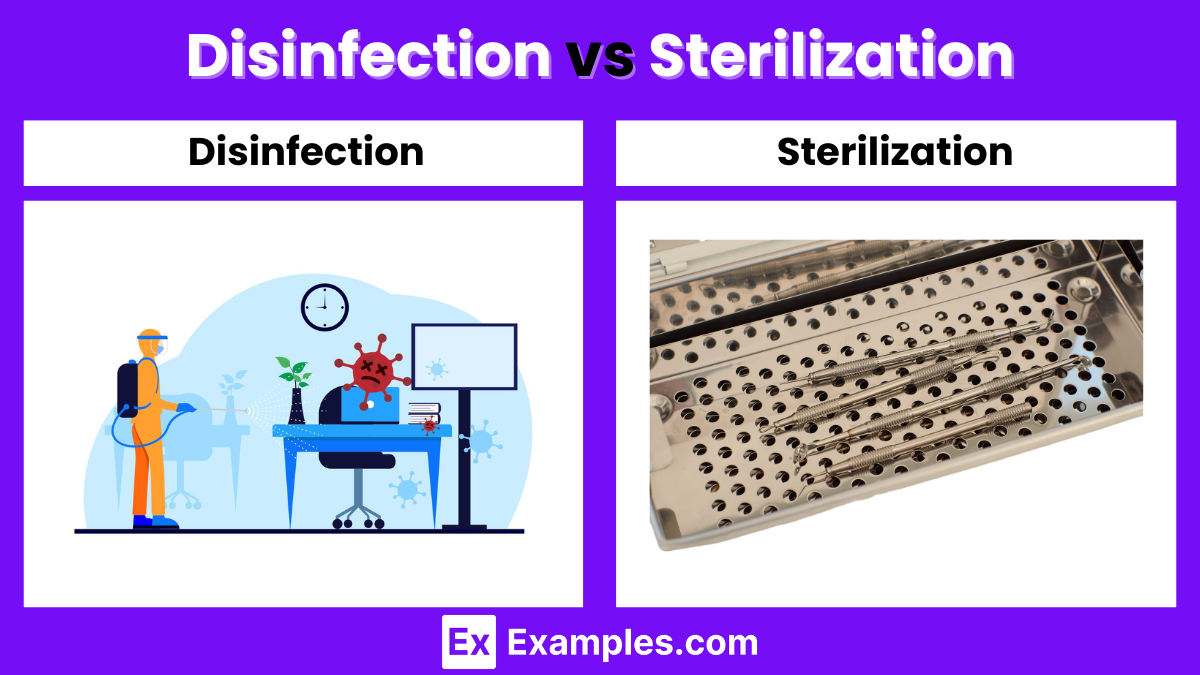What is the primary difference between disinfection and sterilization?
Disinfection kills all microorganisms, while sterilization kills most
Disinfection kills most microorganisms, while sterilization kills all
Disinfection uses heat, while sterilization uses chemicals
Disinfection is used for medical instruments, while sterilization is used for surfaces



